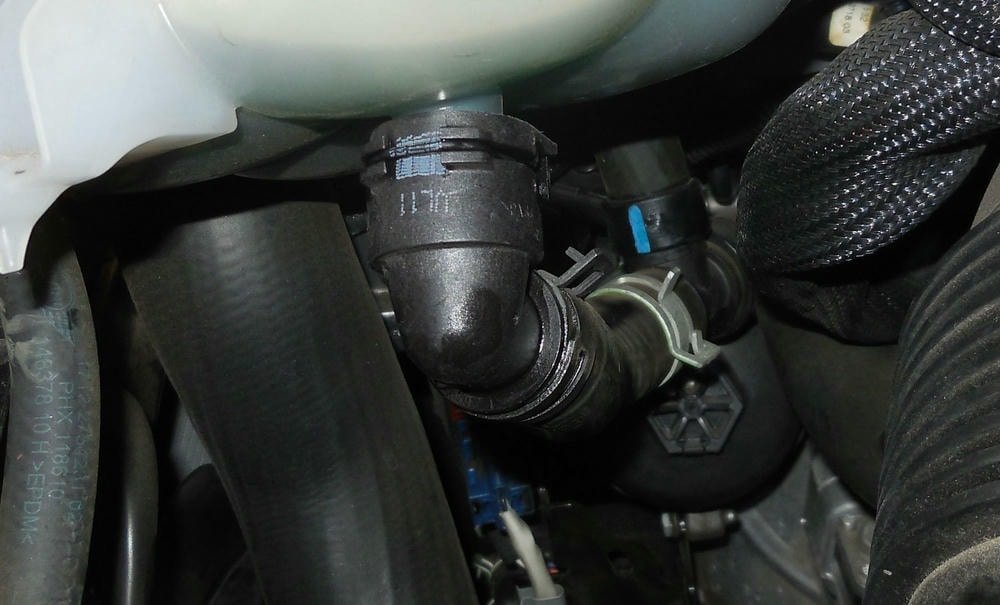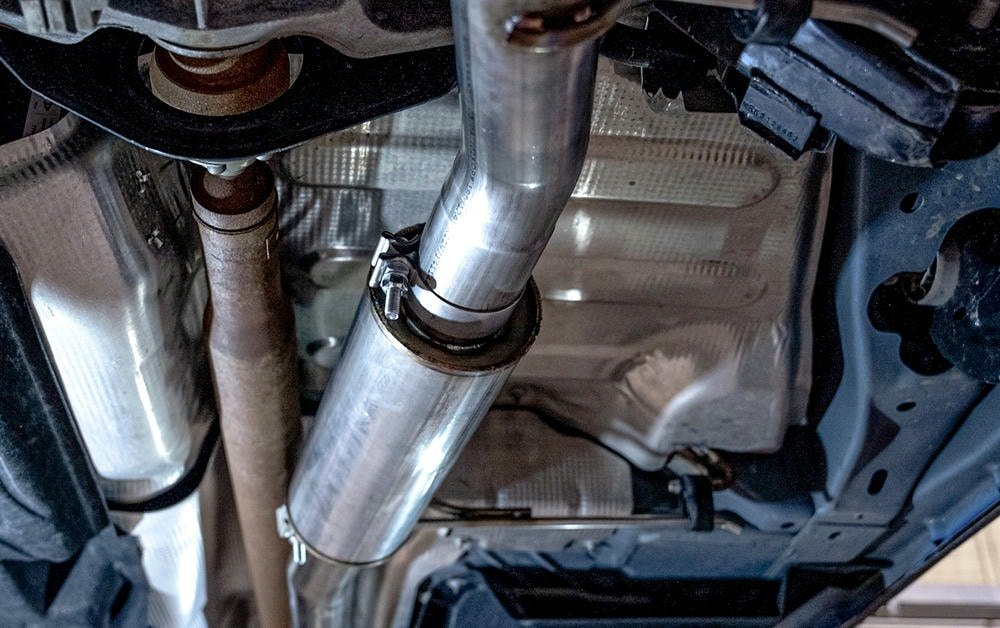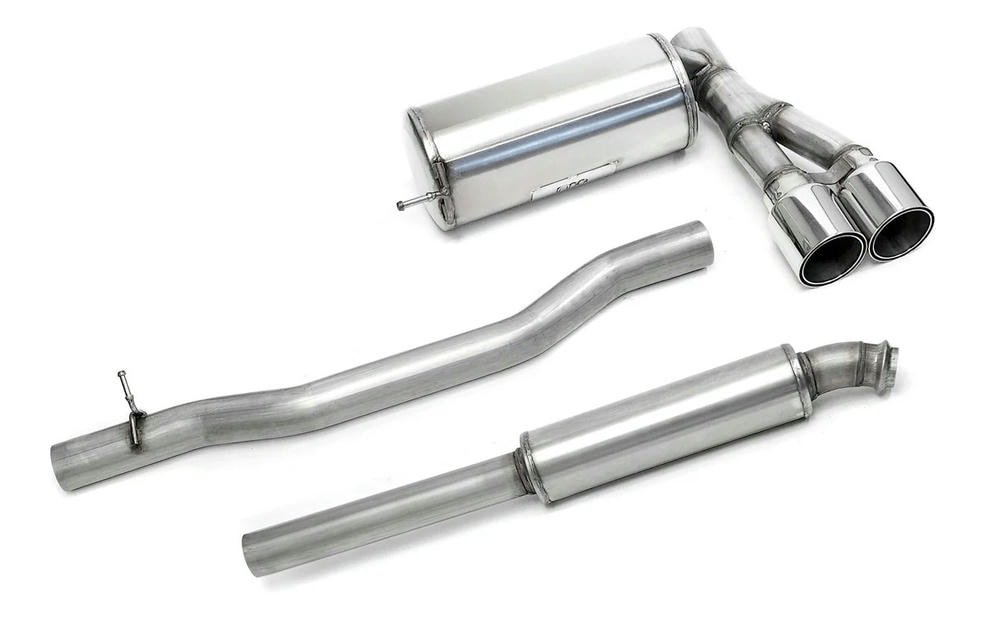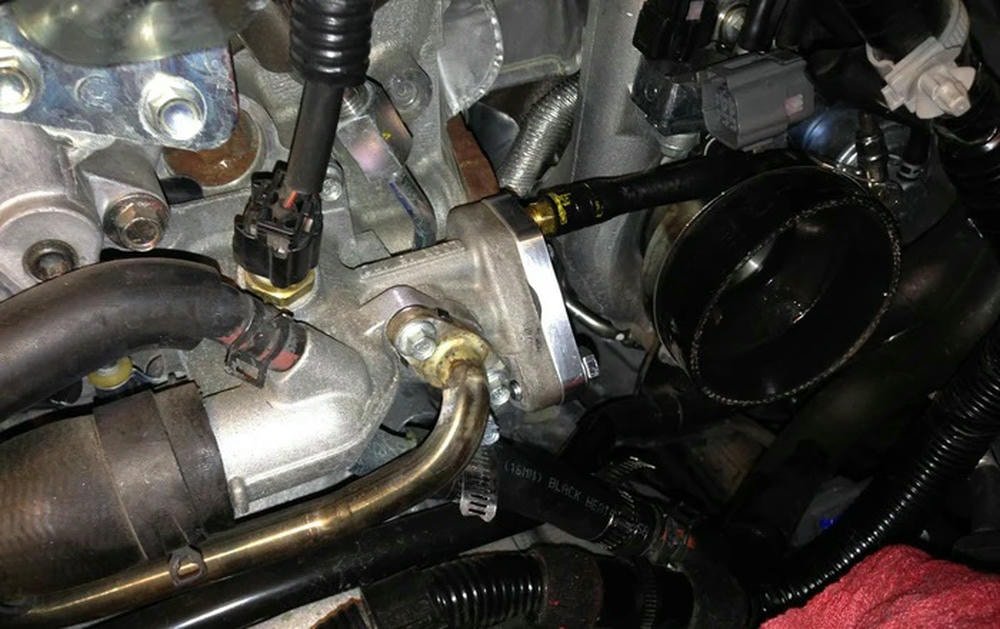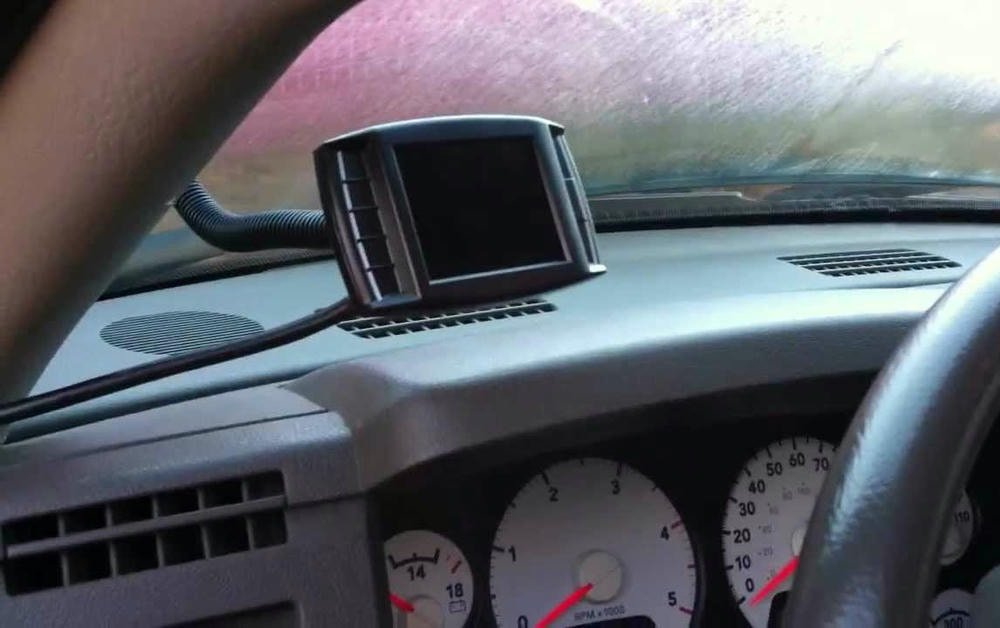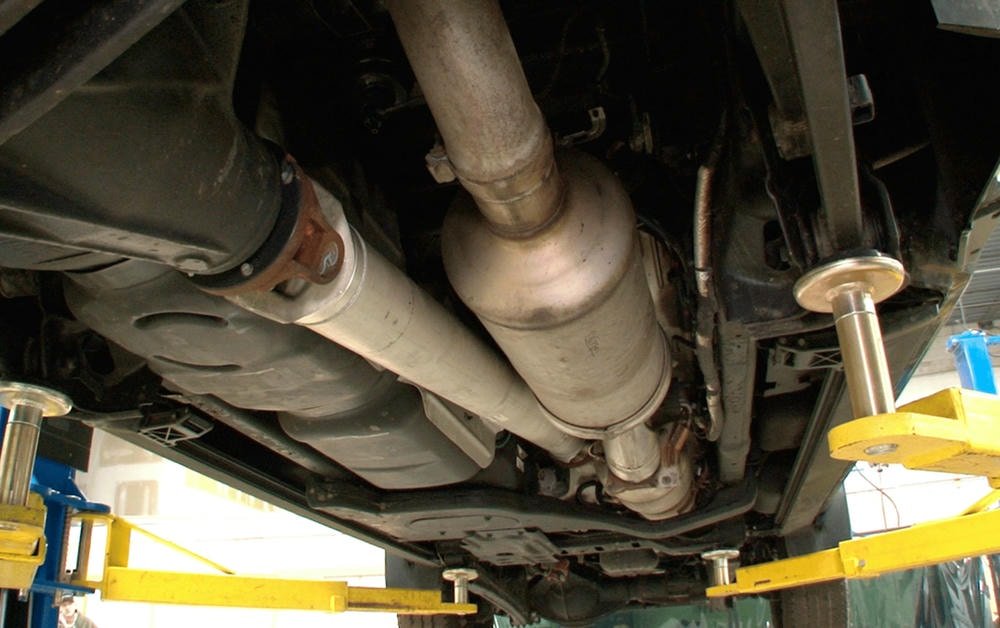Die Behebung von Kühlmittelfilterproblemen ist für Besitzer von Diesellastwagen von entscheidender Bedeutung, damit ihre Motoren reibungslos laufen. A Kühlmittelfilter-Kit hilft, die richtige Temperatur zu halten, indem es schädliche Partikel aus dem Kühlmittel entfernt.
Dadurch wird der Motor vor Überhitzung und Schäden geschützt. Aber manchmal gehen Dinge schief, wie undichte Stellen, verstopfte Filter oder Durchflussbegrenzungen, die durch unsachgemäßen Einbau oder schlechte Teile verursacht werden.
Um diese Probleme in den Griff zu bekommen, muss man wissen, wie man Lecks findet und repariert, verschmutzte Filter austauscht und sicherstellt, dass alles richtig sitzt. Es ist auch wichtig, gute Teile zu verwenden und das Kühlsystem regelmäßig zu überprüfen.
Auf diese Weise können die Lkw auf der Straße bleiben, ohne Überhitzungsprobleme.
We’ll show you how to tackle common issues step by step. Keep reading for helpful tips!
Inhaltsübersicht
Umschalten aufHäufige Probleme mit Kühlmittelfilter-Kits
Kühlmittelfilter-Kits sind mit einer Reihe von Problemen konfrontiert, die dem Motor Ihres Diesel-Lkw schaden können. Dazu gehören Undichtigkeiten durch schlechte Dichtungen, Filter, die mit Müll verstopft sind, Kühlmittel, das sich nicht richtig bewegt, und Teile, die nicht so passen, wie sie sollten.
Leckagen und Dichtungsversagen
Undichte Stellen und defekte Dichtungen are common in Diesel-LKW coolant systems. They happen when seals get old or damaged, letting Frostschutzmittelleck aus. Wenn dies nicht schnell behoben wird, kann der Motor Schaden nehmen.
Um Lecks zu finden, sollten Sie die Schlauchverbindungen und die Kopfdichtung auf Anzeichen von Frostschutzmittel außerhalb des Systems überprüfen. Lkw-Fahrer sollten auch einen Blick auf den Ölkühler und den Heizungskern werfen, da auch diese Teile undicht sein können.
Undichte Stellen zu reparieren bedeutet, Teile, die nicht mehr gut funktionieren, zu ersetzen oder neu abzudichten. Für eine Kopfdichtungsleck, one might need to put in a new gasket. If hose connections are bad, installing new hoses can stop the leaking.
Verwenden Sie immer hochwertige Ersatzprodukte um zukünftige Probleme zu vermeiden. Diese Schritte tragen dazu bei, dass das Kühlsystem gut funktioniert und der Motor vor Überhitzung und Schäden geschützt wird.
Verstopfte Filter
Verstopfte Filter in einem Diesel-Lkw können zu großen Problemen führen. Sie verhindern, dass das Kühlmittel so fließt, wie es sollte. Dies kann zu einer Überhitzung des Motors führen und ihn beschädigen. Besitzer von Diesel-Lkw müssen ihre Filter häufig überprüfen.
Anzeichen für eine Verstopfung sind hohe Motortemperaturen und schlechte Leistung.
To fix a clogged filter, one needs to clean or replace it with high-quality components. Choosing the right parts ensures good radiator health and keeps the cooling system working well.
Regelmäßige Wartung hilft, Verunreinigungen zu entfernen, die Verstopfungen verursachen. Die Überwachung des Kühlmittelstands und die Verwendung von entionisiertem Wasser beugen zukünftigen Problemen vor.
Kühlmitteldurchflussbeschränkungen
Coolant flow issues in a diesel truck’s cooling system can lead to engine overheating and damage. Dies geschieht, wenn das Kühlmittel nicht frei durch den Motor und den Kühler fließen kann. Häufige Schuldige sind verstopfte Schläuche, verbogene Leitungen oder eine defekte Wasserpumpe.
Jedes dieser Probleme verlangsamt die Bewegung des Frostschutzmittels und erschwert es dem Motor, kühl zu bleiben.
Damit Ihr Krafthubdiesel reibungslos läuft, sollten Sie immer auf Knickstellen im Kühlmittelleitungen und stellen Sie sicher, dass die Wasserpumpe gut funktioniert.
To fix these issues, owners might need to replace bent or blocked hoses and repair or swap out a damaged water pump. Regular system diagnostics help find these problems early. This way, trucks avoid serious damage and stay on the road longer.
Unsachgemäße Installation oder Montage
Besitzer von Diesel-Lkw haben häufig Probleme mit dem Kühlmittelfilter aufgrund von falsche Einstellung oder Passform. Wenn der Filter nicht an der richtigen Stelle sitzt, kann er Lecks verursachen und den Schutz für den Motor verringern. For someone who drives a power stroke Dieselmotor, this mistake can lead to bigger issues down the road.
Viele haben ihre Erfahrungen online in Foren und durch E-Mail-Marketing-Tipps von anderen Fahrern mitgeteilt. Sie betonen, dass sie das Handbuch genau prüfen und sicherstellen, dass alles so passt, wie es soll.
Ein häufiger Fehler ist die Verwendung nicht übereinstimmender Teile was für Ihren Lkw benötigt wird. Diese Ungleichgewicht kann Kühlmittelfluss blockieren und Ihren Motor zum Überhitzen bringen. Lkw-Fahrer legen Wert darauf, hochwertige Filter zu finden, die genau auf ihr System abgestimmt sind, und vermeiden Markenprodukte, die möglicherweise nicht richtig passen.
Einige haben diese Lektion auf die harte Tour gelernt, nachdem sie bei Langstreckenfahrten mit überhitzten Motoren zu kämpfen hatten. Sie empfehlen, die Teilenummern immer mit den Spezifikationen des Lkw abzugleichen, bevor man etwas Neues kauft.
Fehlersuche und Problembehebung
Addressing coolant filter issues begins with detecting and repairing leaks or substituting impaired components. For those experiencing such challenges, this instruction provides methods to handle common issues like seal leaks, congested filters hindering your engine’s cooling efficiency, or improper installations causing troubles.
Sie erwerben das Wissen, um Probleme im frühesten Stadium zu erkennen, und erhalten eine detaillierte Anleitung zur Behebung der Probleme, von der Behebung problematischer Lecks bis hin zur Sicherstellung, dass Ihre Kühlmittelleitungen perfekt strukturiert sind, um reibungslos zu funktionieren.
Step into the guide to maintain your diesel truck’s cool and robust performance without any hassle.
Auswechseln oder Wiederverschließen des Filters
Befestigung von Probleme mit dem Kühlmittelfilter ist der Schlüssel zur Wartung von Diesel-Lkw. Er trägt dazu bei, dass das Kühlsystem gut läuft und schützt den Motor. Hier erfahren Sie, wie Sie einen Kühlmittelfilter ersetzen oder neu abdichten:
- Suchen Sie den Kühlmittelfilter. Er befindet sich normalerweise am Motorblock oder in dessen Nähe.
- Schalten Sie den Lkw aus. Stellen Sie sicher, dass er abgekühlt ist, bevor Sie mit der Arbeit beginnen.
- Drain some coolant to prevent spills when you remove the filter.
- Verwenden Sie einen Schraubenschlüssel, um den alten Filter zu lösen und zu entfernen.
- Prüfen Sie die Dichtungen des Filters auf Beschädigungen. Wenn sie abgenutzt sind, ersetzen Sie sie durch neue.
- Holen Sie sich ein hochwertiges Ersatz-Filter. Dies ist wichtig, um künftige Lecks zu verhindern und zu gewährleisten Motorschutz.
- Lubricate the new filter’s seal with a bit of fresh coolant. This makes installation easier and helps seal it better.
- Schrauben Sie den neuen Filter zunächst mit der Hand ein und ziehen Sie ihn dann mit einem Schraubenschlüssel fest, aber übertreiben Sie es nicht.
- Füllen Sie das Kühlmittel, das während dieses Vorgangs verloren gegangen ist, wieder auf und achten Sie dabei auf undichte Stellen.
- Starten Sie den Lkw und lassen Sie ihn ein paar Minuten laufen. Prüfen Sie dann erneut, ob der Filterbereich undicht ist.
Taking these steps helps maintain your cooling system and avoid issues like leaks and Durchflussbegrenzungen im Motor Ihres Diesel-Lkw. Regelmäßige Kontrollen sind Teil guter Wartungsgewohnheiten. Sie sorgen dafür, dass alles reibungslos läuft und Ihr Lkw länger ohne Probleme mit Kühlmittelfiltern oder anderen Systemen im Fahrzeug unterwegs ist.
Reinigung oder Austausch von verstopften Filtern
Verstopfte Filter in einem Kühlsystem können bei Diesel-Lkw-Motoren zu großen Problemen führen. Wenn sie nicht kontrolliert werden, können sie zu folgenden Problemen führen Überhitzung und schwere Schäden. Hier erfahren Sie, wie Besitzer von Diesel-Lkw dieses Problem angehen können.
- Stellen Sie den Motor ab und lassen Sie ihn abkühlen. Dies verhindert Verbrennungen und andere Verletzungen.
- Finden Sie die Kühlmittelfiltergehäusedie sich in der Regel in der Nähe des Kühlers befindet.
- Verwenden Sie einen Schraubenschlüssel, um den Gehäusedeckel vorsichtig zu entfernen. Tragen Sie Handschuhe, um den Kontakt mit Frostschutzmittel zu vermeiden.
- Nehmen Sie den alten Filter heraus. Wenn er aussieht verschmutzt oder verstopftmuss sie ersetzt werden.
- Untersuchen Sie das Innere des Filtergehäuses auf Sediment oder Schutt. Reinigen Sie es gründlich.
- Erhalten Sie eine hochwertiger Ersatzfilter die den Spezifikationen Ihres Fahrzeugs entspricht.
- Setzen Sie den neuen Filter in das Gehäuse ein und achten Sie darauf, dass er gut sitzt.
- Tragen Sie bei Bedarf erneut Dichtmittel auf die Gewinde auf, um Lecks zu vermeiden.
- Schrauben Sie den Gehäusedeckel wieder fest, aber nicht zu fest, da dies zu Rissen im Gehäuse führen könnte.
- Füllen Sie das verlorene Kühlmittel mit dem richtigen Frostschutzmittel für Ihren Lkw auf.
- Starten Sie den Motor und prüfen Sie, ob im Bereich des Filtergehäuses undichte Stellen vorhanden sind.
Die persönliche Erfahrung zeigt, dass regelmäßige Kontrolle des Kühlmittelstands and quality can prevent most clog issues before they start affecting Motorleistung significantly. Always follow maintenance schedules outlined by your truck’s manufacturer, using components that are recommended for your specific model ensures longevity of both filter and engine life.
Verwendung von hochwertige Filter verringern das Kontaminationsrisiko und verlängert die Zeiträume zwischen den Wechseln - der Schlüssel zur Aufrechterhaltung der optimalen Funktion des Kühlsystems auf Dauer.
Einstellen oder Umverlegen von Kühlmittelleitungen
Die Anpassung oder Neuverlegung von Kühlmittelleitungen in Ihrem Diesel-Lkw kann viele Probleme lösen cooling system problems. This task requires careful planning and execution for effective results.
- Identify the issue with your cooling system. Maybe you’re dealing with leaks, overheating, or coolant flow restrictions.
- Gather necessary tools like wrenches, clamps, and new coolant hoses if needed.
- Drain the coolant from your truck to prevent spills while working on the lines.
- Locate the coolant lines that need adjustment or replacement by checking where they connect to the engine and radiator.
- Use a wrench to loosen the fittings on these lines carefully. Avoid stripping these fittings as this could cause more leaks.
- Inspect the hoses for cracks, hardening, or other damage that might require replacement instead of just re-routing.
- Decide on a new route for your lines that avoids Brennpunkte or areas where they might get pinched or damaged.
- Measure how much hose you will need to complete this new route and cut any new hoses to size.
- Connect your hoses using firm but careful force to ensure tight seals at both ends.
- Secure your newly routed lines away from moving parts with clamps to avoid wear and tear.
- Refill your cooling system with antifreeze, following manufacturer guidelines for mixture ratios.
12.I start the truck and check for any leaks immediately around the work area.
13.Monitor the temperature gauge while idling to confirm proper cooling function is restored.
From personal experience, taking time to carefully plan where each line should go greatly increases success chances when adjusting or re-routing coolant lines in diesel trucks. Ensuring each connection is sealed tightly prevents future leaks and saves time down the road on additional repairs.
Sicherstellung einer ordnungsgemäßen Installation
Sicherstellung ordnungsgemäße Installation of a Kühlmittelfilter in a diesel truck is crucial for preventing leaks and ensuring the cooling system works well. Many issues with coolant filters stem from incorrect installation. Here’s how diesel truck owners can make sure they install their coolant filters correctly:
- Check the manual: Before starting, it’s vital to read through the truck’s manual and the instructions that come with the coolant filter kit. This ensures understanding of specific requirements.
- Gather all tools: Make sure to have all necessary tools ready. This includes wrenches, sealant for threads, and perhaps even a torque wrench for precise tightness.
- Prepare the area: Clean around the area where the filter will go. Removing dirt or grime prevents contaminants from entering the cooling system.
- Inspect components: Before installing, check all parts of the kit for any damage or defects. This step avoids leaks later on.
- Apply sealant correctly: If using thread sealant on fittings, apply it evenly but avoid overdoing it, which could block flow paths.
- Folgen Sie torque specs: Tighten all bolts and fittings according to the specifications given in the instruction manual to prevent leaks without over-tightening.
- Align properly: Ensure that hoses and lines are aligned correctly to avoid kinks or unnecessary tension that could lead to wear or leaks.
- Check fitment: Verify that the filter sits snugly in its housing and doesn’t move around too much once installed.
- Fill with anti-freeze: After installing, fill up with anti-freeze as recommended by your truck’s manufacturer.
- Bleed air from system: Eliminate any trapped air within the cooling system to avoid hot spots and ensure proper flow.
11.Scroll down slowly as you work through these steps one at a time without rushing.
Vorbeugung künftiger Probleme
Keeping your cooling system in top shape means less trouble down the road. Make it a habit to check things out often and pick only the best parts for your setup.
Regelmäßige Wartung und Inspektionen
Regular maintenance and inspections are crucial for keeping a diesel truck’s cooling system running smoothly. This helps prevent common coolant filter kit issues, such as leaks, clogged filters, and coolant flow restrictions.
Here’s what diesel truck owners need to do:
- Check the coolant level every month. Make sure it’s not too low or too high.
- Inspect the coolant filter for signs of wear or damage. Look closely for any cracks or breaks.
- Clean the system to remove contaminants. Do this every six months to keep everything running well.
- Change the coolant filter at least once a year, or more often if you drive in harsh conditions.
- Look for leaks around the filter and seal areas regularly. Spotting leaks early can save a lot of trouble later.
- Use only high-quality filters and components when making replacements to ensure longer life and better performance.
- Keep an eye on the anti-freeze levels, especially before winter hits, to prevent freezing problems in the cooling system.
- Schedule professional inspections once a year to catch any issues you might have missed.
Following these steps will help diesel truck owners avoid many common problems with their coolant filter kits, ensuring their trucks run cooler and more efficiently for longer.
Using High-Quality Filters and Components
Picking high-quality filters and parts is key for keeping your diesel truck’s cooling system in top shape. High-end filters catch more dirt and last longer than cheaper ones. This means less trouble with leaks or clogs in your coolant filter kit.
Good filters can handle the high demands of a Dieselmotor, keeping anti-freeze clean and ensuring smooth operation.
Verwendung von sturdy components also prevents coolant flow restrictions that can harm your engine. Quality hoses and seals resist wear, reducing the risk of leaks. In short, investing in top-notch filters and durable parts saves you time and money on future repairs.
It keeps your truck running well, avoiding allgemeine Probleme seen with lower quality options.
Überwachung von Kühlmittelstand und -qualität
Keeping an eye on coolant levels and quality is a must for any diesel truck owner. Low coolant can lead to overheating, while dirty coolant may cause clogs and damage. Use a gauge or dipstick regularly to check the level of anti-freeze in the truck’s system.
If it looks cloudy or has particles floating in it, it’s time for a change. This simple act of monitoring can prevent costly repairs.
A gut gewartetes Kühlsystem is key to keeping your diesel truck running smoothly.
Make sure the anti-freeze mix is right too; too much water can freeze in winter and too little won’t cool effectively. Changing old coolant helps remove contaminants that build up over time, threatening your engine’s performance.
Opting for high-quality filters catches these impurities before they cause trouble, making regular checks and maintenance a smart habit for every truck driver.
Schlussfolgerung
Befestigung von coolant filter issues needs the right know-how. Mike Johnson, with 20 years in diesel engine maintenance, knows this well. He has degrees in mechanical engineering and automotive tech management.
His work boosts how trucks run and last longer.
Mike says fixing coolant filters helps engines stay cool and work better. He talks about seals, clogs, flow problems, and bad fits being common troubles that hurt truck performance.
He points out safety first. Using good parts that meet standards keeps trucks running safely. Mike stresses telling customers the truth about what they need for their cooling systems.
For everyday use, he suggests checking Kühlmittel levels often and choosing quality filters to avoid future problems.
Mike weighs pros and cons: Fixed right, a cooling system works great; ignored, it can cause big damage or overheating.
His final word? Pay attention to your truck’s cooling system before small issues turn bad. This saves time and money for all diesel truck owners.
FAQs
How can I troubleshoot coolant filter problems in my truck’s cooling system?
You can begin troubleshooting coolant filter problems by inspecting your truck’s cooling system for leaks or contaminants. Regular maintenance is key to identifying issues early and fixing them before they escalate.
What are the steps involved in repairing a coolant filter kit?
To repair a coolant filter kit, first identify any leaks in the system and fix them promptly. Next, ensure that the anti-freeze level is optimal and there’s no contaminant present which could affect performance.
Can I receive text message alerts or telephone calls about potential issues with my cooling system?
While not all systems offer this feature, some advanced models do provide opt-in services for text messages or telephone alerts regarding potential issues with your cooling system.
Are there guides available to help me troubleshoot my vehicle’s coolant filter?
Yes, many resources including online forums and mechanic shops provide detailed guides on how to conduct a comprehensive coolant filter troubleshooting process step-by-step.
Why is it important to remove contaminants from my truck’s cooling system regularly?
Contaminants can lead to serious damage over time if left unchecked within your truck driving equipment’s cooling systems. Regularly removing these substances helps keep your engine running smoothly while preventing costly repairs down the line.

